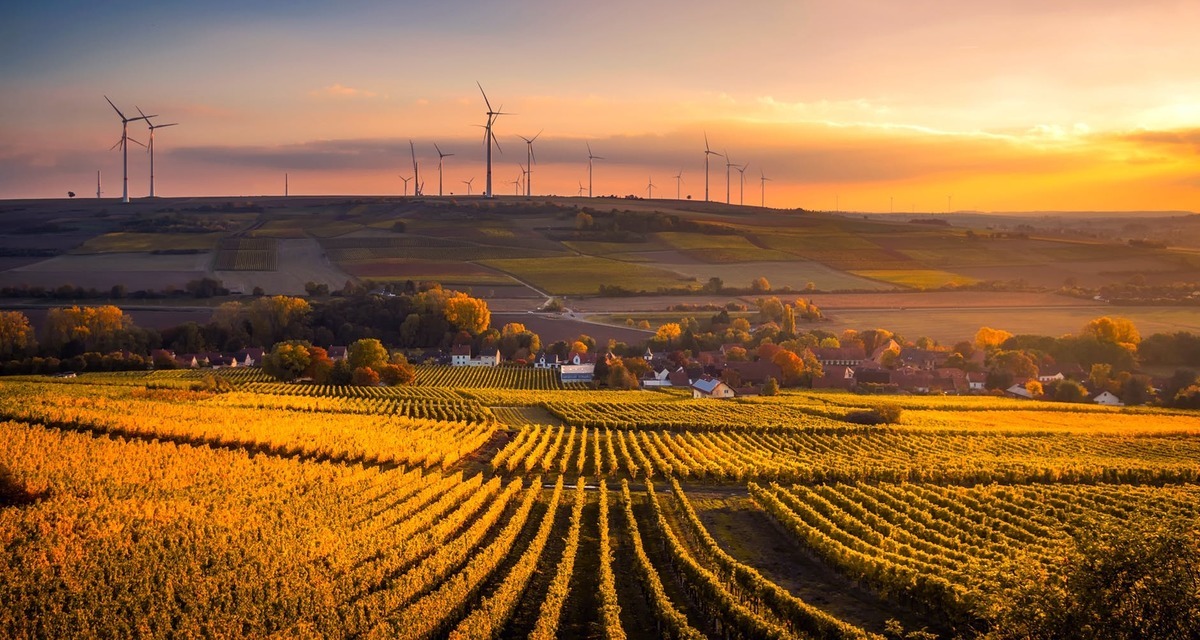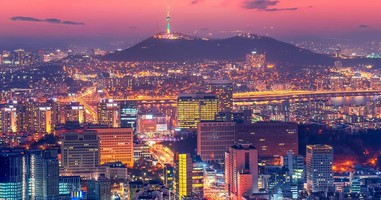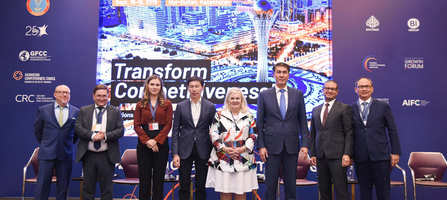
Analytics
Agricultural Industry in Kazakhstan. Part 1
June 22, 2020

Introduction
Agriculture, as a basic component of the agro-industrial complex, according to the state policy, is one of 8 sectors, which in the future can provide diversification and growth of competitiveness of the economy of Kazakhstan. It is expected that the intensification of agricultural production within the framework of the State Program for Development of Agro-Industrial Complex for 2017-2021 will become the basis of the "diversification element".
In recent years, an open discussion on the role and prospects of agricultural development has been actively pursued. It is this ambiguity that requires answers to fundamental questions:
- what is agriculture in Kazakhstan?
- what is the role of the country's agricultural sector?
To find answers to these questions, a comprehensive analysis of available information has been launched: statistics, government programs, history of agricultural development in Kazakhstan, OECD and FAO studies, a review of international experience, Internet articles and retrospective collection of search queries and media materials.
The purpose of this article is to formulate a conceptual vision of agricultural development for further analysis of the industry's competitiveness. This article presents 4 sections, which will present different perspectives on the main directions of the agricultural sector in the economy of Kazakhstan.
1. Key macroeconomic indicators
2. Public policy review
3. Analysis of search queries and media materials
4. Conceptual vision of agricultural development
1
Key Macroeconomic Indicators
Higher growth rates in the country's energy sector soon after gaining state independence significantly affected the decline in the role of agriculture in the country's economy. By the end of 2019, the share of agriculture in Kazakhstan's GDP was 3.1 trillion tenge or 4.4%. Over the past 8 years, agricultural production has maintained a stable position, not exceeding the maximum figure of 4.7% of GDP. However, the economic contribution of agriculture in the 1990s was 7.7 times higher, amounting to 34% of gross domestic product.
Figure 1. Agriculture in the structure of GDP, %
The gross value added of agriculture accounts for 5.1% of the total volume, or 2.9 trillion tenge. Over time, the share of agriculture in total GVA gradually decreased by 4 p.p. as compared to 2001. The highest indicators were achieved in 2009 (6.9%) and 2011/2015 (6.0%). As with the contribution to GDP, the indicator has remained stable at 5% in recent years.
Figure 2. Agriculture in the structure of the GVA, %
Despite the relatively low share of investment in fixed assets (only 3.3%), the average annual growth rate is positive - 14% for 2003-2018. The volume of investments in 2018 amounted to 365 billion tenge, exceeding the 2013 figure by 2.2 times. However, the overall investment trend is unstable.
Figure 3. Investments in fixed assets in real prices 2018, billion tenge
With some fluctuations, the share of investments in fixed assets to GVA of agriculture (13%) has increased comparatively in recent years. Compared to other industries, the indicator is lower than in manufacturing (18%) and mining (49%).
Figure 4. Investments in fixed capital to the GVA of agriculture, %
Gross output of agriculture, forestry and fishery of Kazakhstan is 4.5 trillion tenge. Output mainly consists of livestock (45.6% of output) and crop production (53.6%). The share of livestock production exceeded crop production only in 1998 and 2010. Despite periodically unstable indicators, where crop production accounted for up to 73% of agricultural output (1992), in recent years the production ratio has stabilized. More significant growth rates of livestock production were observed in the period from 1998 to 2010 – 3.5%.
Weather conditions have periodically had an impact on crop development conditions and crop yields, but since 2012 there has been a steady positive growth rate of 5.3%.
Figure 5. Gross output of livestock and crop production in real prices 2018, trillion tenge
Gross output per capita varies significantly from region to region. The North-Kazakhstan region, being an absolute leader, has almost twofold difference between indicators in comparison with Akmola region: 1.8 and 1.4 times higher in the output of livestock and crop production, respectively. While in 8 regions, crop production exceeds livestock production from 1.0 to 4.2 times, in 7 regions, livestock production exceeds crop production by 1.0 to 1.9 times.
Figure 5. Gross output per capita in 2018, thousand tenge
2
Public Policy Review
During all the years of independence, 10 state programs for the development of the agrarian sector have been prepared, which reflect the vision of state policy. Defining clear boundaries of agriculture is difficult due to the variable changes in the priority directions in certain period of the country's formation. The economic state of the economy during certain periods of the country's formation played a major role in changing the vector of agricultural development.
Figure 6. Agroindustrial development programs
For example, in the 1980s, special attention was paid to the social orientation of investments, in particular to the construction of non-productive infrastructure up to 32% of the total amount of investments. The goal and objective of the program for 1991-1995 are focused on "contributing to improving the quality of life of rural workers and equalizing and creating modern social infrastructure, improving the comfort and arrangement of rural settlements and housing".
The Program for Development of Agro-Industrial Complex for 1993-1995 and till 2000 was directed on "structural reorganization of agricultural production on the basis of transition to the market mechanism" (through privatization of state enterprises) and use of scientific and technological updating. At the fundamental level of the subsequent two-year programme, the objective was also to ensure economic growth in competitive agricultural sectors and to stabilize production of major agricultural products.
The conceptual shift is reflected in the state program for 2003-2005. After a comparative stabilization of the economic situation since independence, the goal of the new program was to ensure food security and create an effective agrobusiness system.
A new wave of social orientation in rural development began in the period 2004-2010. The goal was to create normal living conditions for the aul (village) based on the optimization of rural settlement through the improvement of social and engineering infrastructure of rural settlements with high potential for socio-economic development.
The Concept of 2006-2010 paid attention to ensuring the sustainability of agro-industrial complex based on the growth of productivity and profitability of agricultural sectors. If we look at the development trend of the share of agriculture in GDP and GVA over the same period of time, in 2009 we can see relatively high rates of 5.7% and 6.9%, respectively. The difference of this program was also in focus on regional specialization and consolidation of agricultural formations.
More recently, the programs of 2010-2017 show a transition to expanding the export potential of agriculture and a "renaissance" of the importance of food security.
Further, on the basis of the "Agrobusiness-2017" Program for Development of Agro-Industrial Complex and the State Program for Water Resources Management, a relevant policy for 2017-2021 was developed. In addition to improving the competitiveness of the industry and food security, the export specialization is determined by processed products.
The Program for Development of Agro-Industrial Complex for 2017-2021 provides a more comprehensive description of the role of the agro-industrial complex as one of the "important sectors of the economy, which forms the food and economic security of the country, as well as labor and settlement potential of rural areas". However, over the past three years, adjustments have been made to the direction of the Program for Development of Agro-Industrial Complex 3 times. The key point was precisely the change of priorities for the development of the agricultural sector - from export orientation in 2017 to import substitution in late 2019.
3
Analysis Of Search Queries
And Media Materials
References and search queries were reviewed using search keys with a 3-year retrospective collection, and interests and resource visits by users interested in resources related to agro-industrial complex were used. The collection of materials in the media related to the agro-industrial complex was carried out on resources that publish the economic-wide agenda.
Theses concerning the agricultural sector reflect various groupings of the associative series:
- Economic sector is the basis of a strong economy, economic growth driver, real force, core of the economy, one of the main/key sectors, the most important sector, support for economic growth, important link in the economy, priority sector.
- The source of food - the world's largest grain power, Kazakhstan has real potential to become one of the global food hubs, Kazakhstan can feed Russia/China.
- Social welfare - development of rural areas, optimization of rural settlements, provision of a higher standard of living for rural residents, standards of social and engineering welfare of rural residents, growth of income level in rural settlements.
A review of search queries points to the prevailing emphasis towards the first direction - the role of agriculture in the media space is most associated with the economic driver. The pandemic has increased the importance of food security and the prospect of the country becoming a global food hub is being considered.
Several conclusions can be drawn from the results of analyzing search queries:
- Materials are often published as advertising or to promote the achievements of the government and the Ministry of Agriculture in particular, or as a private opinion/presentation of an individual player and/or group from the industry.
- The materials often use expressions/abstracts borrowed from presidential messages, reports and government presentations, such as "Agriculture is the basis of a strong economy or agriculture is the driver of the economy".
As a result, the media act not only as a relay, but also as an amplifier of "positive" theses about the importance of the agricultural sector in the country's economy for the population. This creates the effect of a "reverse funnel" (an amplified echo of opinions) of the importance of the agricultural sector among the country's top officials.
It is assumed that this action, backed up by significant funding both from public funds and raised capital in the period from 2007 to 2013, has created false/perverse incentives for market participants.
4
Conceptual Vision Of Agricultural Development
Three main areas of agricultural development can be grouped together on the basis of the analysed sources:
- Driver of the economy;
- Ensuring food security;
- Social development of rural territories.
The driver of the economy implies the development of the resource potential of agriculture, which can provide a high contribution to the economic growth of the country. Export orientation of agricultural products plays a key role.
The second task is aimed at implementing measures designed to ensure stable provision of the population's basic food needs. In addition to physical and economic accessibility, quality and safety of products, food independence from import suppliers and domestic production at the level of 80% are also key components of this direction.
Social development in rural areas includes measures to ensure social well-being: improving the level and quality of life in rural areas. This primarily includes employment and income diversification of rural residents. Access and quality of education and health systems are additional priorities.
This formulation of the three directions shows the diversity of approaches that can be applied in the analysis of the state and prospects of development of the agricultural sector. This does not exclude the fact that several concepts may be prioritized at a certain time, as seen in the public policy review. More important is the extent to which agriculture meets each of the objectives.
Conclusion:
Thus, three key areas of agricultural development can be identified and conceptual changes can be tracked both in public planning documents and in the media space. Economic development, food facility and social well-being together form the agricultural sector and opportunities for potential development. For a comprehensive sectoral assessment, it is necessary to consider the state and economic impact of agriculture in all three directions. In the following articles we will try to provide an objective picture of each aspect and find answers to these questions:
- What is the "driver of the economy"? Is agriculture the driver of the economy?
- Does agriculture meet all the criteria for ensuring food security?
- What role does agriculture play in the social development of rural areas?
Links:
Data – Legal Information System of Regulatory Legal Acts under the Ministry of Justice and the Institute of Legislation and Legal Information, Committee on Statistics under the Ministry of National Economy
Cover page – web site Pexels.com
The article on our website – https://crcons.com/rus/agriculture_in_Kazakhstan_1
Author: Marta Tolebayeva
share
article
all publications











